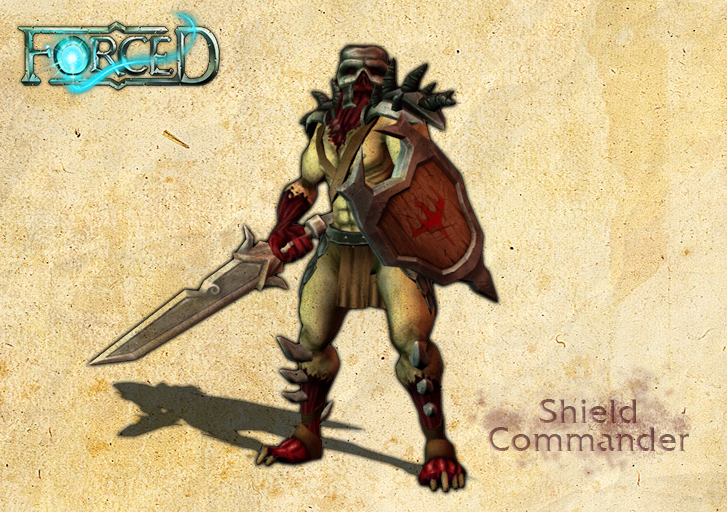
The Shield Commander enemy
A kick in the balls
Despite that boost, the funds were running low during the summer of 2012 and the game was still nowhere near complete. We needed more time, and thus more money, and we decided to try and find both through Kickstarter in what more and more looked like an all-or-nothing gamble.
After a good start, the campaign slowed down considerably. Just 10 days before the end, we were only on track to hit about 60% of our target. All things were tried. One of them was an image, that told the story of BetaDwarf so far. About our ambitions, dreams, and the obstacles we were facing as unproven developers, trying to get a game on Steam. And the image hit a chord with a lot of people. Suddenly, in the middle of the night, the donations took off; we ended at 164% of our $40,000 goal. And with success came confidence. There were people who believed in us and what we were doing! We found new energy and development picked up speed again.
I guess the lesson from this is: never give up, always keep trying. Especially regarding Kickstarters. And you can never predict, what will work, so stay flexible. We spent two months preparing for it, and what saved us in the end was improvisation. So prepare, prepare some more, and then be ready to throw it all out the window if something else seems to be getting more traction than your minutely laid plans.
Sprint to the finish
In early 2013 we moved to a new office, closer to the city. Some people still lived in the new office, but some also moved out and found their own places. With the money from the Kickstarter we were also able to hold on to the same team now with small payments. After the days in Karlslunde, we had learned that there was also value in trying to keep the same team, as too many changes had been disruptive to the development effort; both in purely practical terms, but also in introducing uncertainty, social adjustments, and new group dynamics.
Work progressed at a brisk pace, but the new material that was created by this final team once again was of a quality that forced us to go over all the old assets again and bring them up to the same level. The closer we got to finishing the game, the more we became concerned about the actual launch of the game since we still had not secured a place on Steam. We were on Steam Greenlight but had a hard time getting in the top 10. Every time we climbed the list, new popular games seemed to pop up in front of us. And once again, money was running out.

Again, however, timing was perfect as we managed to win one of the categories in the Intel Level-up competition, thus securing a spot for a demo on Steam. With the demo up, it finally happened - we became Greenlit. We had a place on Steam to sell our game, but we were still not completely done. Now we also had to integrate Forced into the Steam-framework so that the game would work with friend-lists, automatic patching, Steam-overlay and the like. But we had no more Kickstarter money to use for this final push.
In what can only be described as a ballsy move, the two founders, Kenneth and Steffen, decided to simply take out a personal loan of $100,000 dollars each. Fueled by either courage or confidence (or a combination), they put their personal financial life at stake to finish Forced. And with this, we could finally begin to see the finish line.
A short Early Access period let us pick up some of the most serious bugs prior to release, and on the 24th of October it finally happened. Forced was released on Steam, and what had started out as a crazy pipe dream in a university classroom had become pure, fantastic reality. The same day, Steffen made another image that told the story of the wild ride we had been through while working on the game and distributed it on any available social network. I’m pretty sure that this was a part of the reason that we sold enough copies during that first day to pay off the personal loans that Steffen and Kenneth had taken out.
I guess the lesson from all of this is that even if you have made a great game, you need people to notice it. Our strongest message was the story about our team, so we used that to both save our Kickstarter and boost release sales. We used that - and we believe other developers should do the same. Find out what builds a connection with people and use that to get people to your game. Find out what your story is.
This was ours.